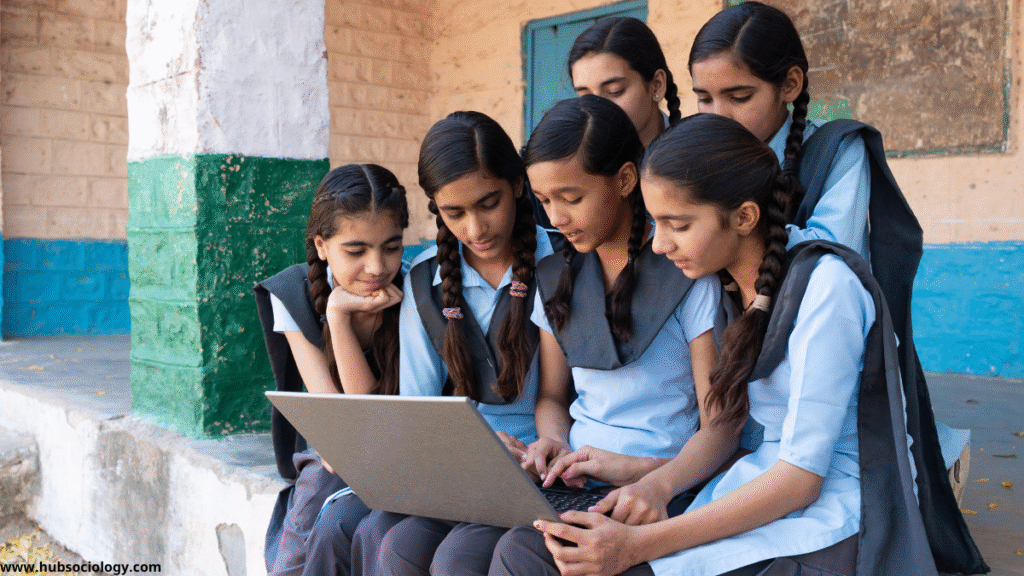Introduction on Women’s Movements in South Asia
Women’s movements in South Asia have played a crucial role in shaping gender discourses, challenging patriarchal norms, and advocating for legal and social reforms. These movements, rooted in the region’s colonial history, cultural diversity, and socio-political struggles, reflect the intersection of class, caste, religion, and nationalism. From fighting for suffrage and education to addressing domestic violence and economic inequality, women’s activism in South Asia has evolved in response to both local and global feminist influences.
This article examines the sociological dimensions of women’s movements in South Asia, focusing on their historical development, key issues, organizational strategies, and challenges. By analyzing the movements in India, Pakistan, Bangladesh, Nepal, and Sri Lanka, we can understand how feminist struggles adapt to different socio-political contexts while maintaining a shared commitment to gender justice.

Historical Context of Women’s Movements in South Asia
The women’s movement in South Asia has its roots in the anti-colonial struggles of the 19th and early 20th centuries. During British rule, social reformers like Raja Ram Mohan Roy in India and Begum Rokeya in Bengal challenged oppressive practices such as sati, child marriage, and female illiteracy. Women’s participation in nationalist movements further politicized their demands, leading to early gains in education and legal rights.
However, post-independence, feminist movements had to navigate the contradictions of newly formed nation-states that often prioritized national unity over gender equality. In India, the Constitution granted women equal rights, but patriarchal traditions persisted. In Pakistan and Bangladesh, Islamic laws influenced gender policies, while in Nepal and Sri Lanka, feminist activism intersected with ethnic and class struggles.
Key Issues in South Asian Women’s Movements
1. Legal Reforms and Women’s Rights
One of the primary achievements of women’s movements in South Asia has been legal reform. Key milestones include:
- India: The anti-dowry movement (1970s-80s), amendments to rape laws after the Mathura rape case (1983), and the Domestic Violence Act (2005).
- Pakistan: Campaigns against honor killings and the Hudood Ordinances, which criminalized adultery in ways that disproportionately affected women.
- Bangladesh: Advocacy for women’s inheritance rights and combating acid attacks.
- Nepal: The women’s movement played a key role in ensuring gender equality in the 2015 Constitution.
- Sri Lanka: Efforts to reform discriminatory personal laws affecting Muslim and Tamil women.
These legal battles highlight how feminist activism has forced states to address institutionalized gender discrimination.
2. Violence Against Women
Gender-based violence remains a major concern across South Asia. Movements have mobilized against:
- Domestic violence: Campaigns like One Billion Rising in India and Pakistan have raised awareness.
- Sexual violence: High-profile cases like the 2012 Delhi gang rape and the Mukhtaran Mai case in Pakistan sparked nationwide protests.
- Religious and cultural violence: Sati, witch-hunting (in Nepal and India), and forced conversions in Pakistan remain contested issues.
3. Economic Empowerment and Labor Rights
Women’s economic participation is hindered by wage gaps, informal labor exploitation, and lack of property rights. Feminist movements have supported:

- Microfinance initiatives (e.g., Grameen Bank in Bangladesh).
- Labor unions for garment workers (Sri Lanka, Bangladesh).
- Land rights movements (e.g., the Bhoomi Utsav in India).
4. Political Representation
Despite quotas (e.g., reserved seats for women in local governance in India and Pakistan), women remain underrepresented in national politics. Movements like the Women’s Action Forum in Pakistan and the 50% Campaign in Nepal push for greater political inclusion.
Organizational Strategies and Challenges
1. Grassroots Mobilization and NGOs
Many South Asian feminist organizations operate at the grassroots level, working with rural and urban poor women. NGOs like SEWA (Self-Employed Women’s Association) in India and Ain o Salish Kendra in Bangladesh provide legal aid and skill training. However, reliance on foreign funding sometimes leads to accusations of promoting “Western feminism,” creating tensions with local cultural values.
2. Coalition-Building Across Identities
South Asian feminists navigate complex identities of caste, religion, and ethnicity. For example:
- Dalit women in India challenge both gender and caste oppression.
- Muslim women’s groups in Pakistan and Bangladesh advocate for reforms within Islamic frameworks.
- Tamil and Muslim women in Sri Lanka face militarization and ethnic marginalization.
3. Digital Activism and Media
Social media has amplified feminist voices, with campaigns like #MeToo in India and #GirlsAtDhaba in Pakistan challenging workplace harassment and public space exclusion. However, online activism also faces backlash, including cyberbullying and state censorship.
4. Religious and Cultural Backlash
Conservative forces often frame feminism as “anti-cultural,” leading to resistance. For example:
- In Pakistan, women’s rights activists are labeled as “Western agents.”
- In India, Hindu nationalist groups oppose feminist critiques of tradition.
- In Afghanistan (though not South Asia, relevant due to Taliban influence), the rollback of women’s rights highlights regional risks.
Comparative Perspectives Across South Asia
India
- Strengths: Strong legal framework, vibrant civil society, and diverse feminist groups.
- Challenges: Caste and religious divides, rising authoritarianism.

Pakistan
- Strengths: Brave activists challenging militarism and extremism.
- Challenges: Blasphemy laws used to suppress dissent, honor killings.
Bangladesh
- Strengths: Success in microfinance and education for women.
- Challenges: Rising Islamist opposition to secular feminism.
Nepal
- Strengths: Progressive constitutional reforms post-civil war.
- Challenges: Trafficking and rural women’s marginalization.
Sri Lanka
- Strengths: High female literacy and political participation.
- Challenges: Post-war militarization and ethnic tensions affecting women.
Conclusion: The Future of Women’s Movements in South Asia
The women’s movements in South Asia demonstrate resilience and adaptability in the face of entrenched patriarchy, political instability, and economic inequality. While significant progress has been made in legal reforms and awareness, challenges like religious fundamentalism, economic disparity, and digital repression persist.
A truly inclusive feminist movement must address intersecting oppressions of caste, class, and ethnicity while building transnational solidarity. The future of women’s activism in South Asia lies in balancing local cultural contexts with universal human rights principles, ensuring that gender justice remains central to the region’s development.
Do you like this this Article ? You Can follow as on :-
Facebook – https://www.facebook.com/hubsociology
Whatsapp Channel – https://whatsapp.com/channel/0029Vb6D8vGKWEKpJpu5QP0O
Gmail – hubsociology@gmail.com
Topic Related Questions on Women’s Movements in South Asia
5-Mark Questions (Short Answer)
- Define the term ‘feminism’ in the context of South Asian women’s movements.
- What were the main objectives of the anti-dowry movement in India?
- How did colonial rule influence early women’s movements in South Asia?
- Name two prominent women leaders from South Asia who contributed to feminist movements.
- What is the significance of the Self-Employed Women’s Association (SEWA) in India?
- How has microfinance contributed to women’s empowerment in Bangladesh?
- What were the key demands of the Women’s Action Forum (WAF) in Pakistan?
- Explain the role of social media in modern feminist movements in South Asia.
- What is ‘honor killing,’ and how have women’s movements in Pakistan opposed it?
- How does caste intersect with gender in Indian feminist movements?
10-Mark Questions (Brief Essay-Type)
- Discuss the role of women in South Asia’s anti-colonial struggles and its impact on feminist movements.
- Analyze the successes and limitations of legal reforms for women’s rights in India.
- Compare the feminist movements in Pakistan and Bangladesh in terms of challenges and achievements.
- How have women’s movements in Nepal contributed to constitutional reforms?
- Examine the impact of religion on women’s rights movements in South Asia.
- Discuss the role of NGOs in empowering women in rural South Asia.
- Why is political representation still a challenge for women in South Asia despite quota systems?
- How does economic inequality affect women’s participation in labor movements in South Asia?
- Explain the significance of the #MeToo movement in India and its limitations.
- What are the major differences between urban and rural feminist activism in South Asia?
15-Mark Questions (Long Essay-Type)
- Critically analyze the impact of globalization on women’s movements in South Asia.
- Discuss how caste, class, and religion shape feminist struggles in India.
- Evaluate the role of women’s movements in challenging gender-based violence in Pakistan.
- How have post-war conditions in Sri Lanka and Nepal affected women’s rights movements?
- Compare the first-wave and second-wave feminist movements in South Asia.
- “South Asian feminism is not a monolithic movement but a diverse struggle.” Discuss.
- Examine the challenges faced by Dalit and Muslim women in feminist movements in India and Pakistan.
- How have digital platforms transformed feminist activism in South Asia?
- Discuss the role of international agencies (e.g., UN Women, World Bank) in shaping women’s movements in South Asia.
- “Patriarchy in South Asia is reinforced by both state and cultural practices.” Critically evaluate this statement with examples.
Additional Higher-Order Thinking Questions (For Research/Debates)
- Can South Asian feminism coexist with religious conservatism? Argue your case.
- How effective are legal reforms in bringing real change for women in South Asia?
- Should feminist movements in South Asia focus more on economic empowerment than legal rights?
- How does the portrayal of women in South Asian media influence feminist movements?
- What lessons can modern feminists learn from historical women’s movements in the region?
